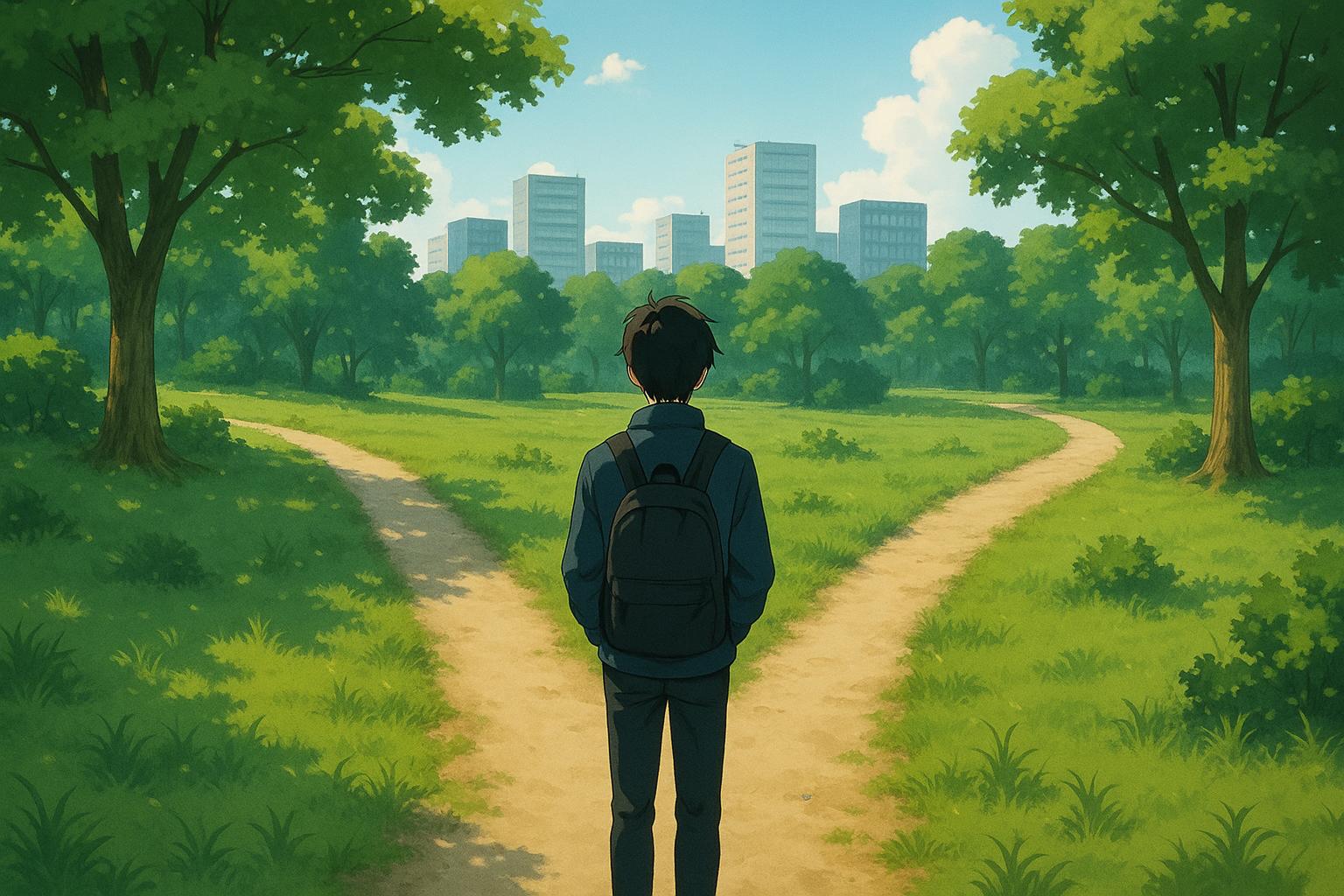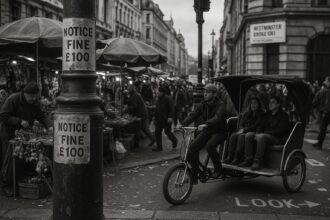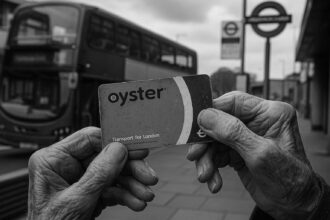Journalist Megan Clement’s memoir intertwines her migrant family’s story with Australia’s contested identity, using the symbolic concept of desire paths to reveal the country’s hidden divisions and challenge notions of privilege amid the pandemic.
Desire paths—those unmarked trails forged by the collective decisions of people or animals seeking the quickest route—have recently gained attention both in urban design and cultural discourse. Their emergence is often deemed a reflection of human agency, symbolising a triumph of practicality over prescribed authority. As more individuals share their encounters with these paths on social media, urban planners increasingly study their formation and significance, recognising them as critical elements in creating functional, user-oriented spaces.
In her memoir Desire Paths, journalist Megan Clement dives deep into the philosophical implications of these informal routes. Drawing upon her experiences as a teenage migrant from the UK to Australia, she intertwines personal narrative with broader geopolitical commentary. The memoir begins at a poignant moment in early 2020, as the world grapples with an unprecedented pandemic, altering life trajectories for billions. During this time, Clement returned to Melbourne to care for her ailing father. Gazing out from her temporary Airbnb in East Brunswick, she reflects on the desire paths winding through Fleming Park—symbols of choices made and opportunities seized amidst life’s unpredictability.
Clement’s observations touch on the stark contrasts in the migration experience. While she and her family navigated a relatively secure and supported journey to Australia, many others, particularly asylum seekers, face dire circumstances, imprisoned for pursuing paths of survival. In her exploration, she challenges the myth of Australia as the “lucky country,” exposing the darker realities faced by First Nations people and marginalised communities. Her book scrutinises the narrative of Australia as a fortress—a place of safety and opportunity that, in truth, segregates and imprisons those most in need.
Her narrative unfolds against the backdrop of global lockdowns, where Clement is forced to navigate her own impossible choices between returning to France or staying in what she views as a restrictive fortress. The precariousness of the situation becomes apparent through her reflections on the inadequacies of hotel quarantine as a safety measure, an issue she bravely brought to the forefront, notwithstanding the potential professional and personal repercussions. As she pens anonymous reports highlighting the failings, she wrestles with her own motivations and the societal pushback against her actions.
Clement’s memoir artfully evolves from a personal account of grief and loss to a contemplative examination of Australia’s identity and its often-unacknowledged flaws. Her family’s multifaceted journey—from Boca Raton to Zimbabwe and back to the UK before settling in Australia—reveals a rich tapestry of resilience, idealism, and the pursuit of a better life. Despite the privilege she acknowledges, she also confronts the hardships that have shaped her family’s narrative, an experience that resonates with many migrants who bridge cultures.
The book does more than recount one woman’s story; instead, it serves as a lens through which larger societal issues of citizenship, identity, and a sense of belonging can be examined. Clement challenges readers to reconsider their perceptions of privilege and adversity, making her work particularly relevant in an Australia that struggles with its own immigration policies and societal divisions. At the same time, she reflects on the communal idea of desire paths—not merely as physical trails but as metaphors for the myriad paths people take amid their struggles and aspirations.
By interweaving personal anecdotes with broader commentary, Clement crafts a text that resonates with a diverse readership, particularly within Australia’s own first- and second-generation migrants. Her memoir is a call to introspection, urging a recognition of the paths taken—not just for oneself but within the broader fabric of society. As the pandemic has reminded many about the fragility of life and the importance of freedom, Desire Paths stands as a poignant exploration of navigating one’s journey and the unmarked trails that shape our lives.
Reference Map:
- Paragraph 1 – [1], [2], [5]
- Paragraph 2 – [1], [3], [6]
- Paragraph 3 – [1], [4], [7]
- Paragraph 4 – [1], [6]
- Paragraph 5 – [1], [2], [3]
Source: Noah Wire Services
- https://theconversation.com/land-of-a-fair-go-or-fortress-australia-a-globetrotting-journalist-questions-australias-myths-and-nationality-itself-254820 – Please view link – unable to able to access data
- https://designhorizons.org/incorporating-desire-paths-into-urban-landscape-design/ – This article explores how integrating desire paths into urban design enhances functionality and user experience in public spaces. It discusses the factors influencing the formation of desire paths, such as natural topography, existing infrastructure, and social behaviours. The piece also highlights the role of urban planners in recognising and incorporating these informal trails to create more responsive and user-centred urban environments, citing examples from cities like Copenhagen and Helsinki.
- https://en.wikipedia.org/wiki/Desire_path – The Wikipedia page on desire paths provides a comprehensive overview of these informal trails formed by repeated human or animal traffic. It covers their emergence as shortcuts, their impact on soil and vegetation, and their role in urban planning. The article also discusses historical examples, such as the Wecquaesgeck Trail in New York City, and the various names and cultural significance associated with desire paths.
- https://geographical.co.uk/news/phenomena-desire-paths – This article delves into the phenomenon of desire paths, highlighting how they reveal human nature and preferences in urban spaces. It discusses examples like the Wickquasgeck Trail in New York and the Oval at Ohio State University, where desire paths have influenced urban planning decisions. The piece also touches upon the challenges urban planners face in integrating these paths into formal designs.
- https://www.forbes.com/sites/lauriewinkless/2024/08/26/desire-lines-the-unofficial-pedestrian-paths-that-shape-the-city/ – This Forbes article examines desire lines—informal pathways created by pedestrians seeking the most efficient routes. It discusses their formation, significance in urban planning, and the challenges they pose, such as safety concerns and environmental impacts. The piece also highlights studies on pedestrian behaviour and how cities can adapt to these organic patterns to improve public spaces.
- https://citiesandspatialcultures.wordpress.com/2022/01/20/desire-paths-and-spatial-memory/ – This blog post explores the concept of desire paths as a form of spatial memory, reflecting habitual human movement and preferences. It discusses how these paths emerge and the interplay between social memory and physical space. The article also considers how urban planners can utilise desire paths to inform design decisions and the challenges in integrating them into formal planning.
- https://www.abc.net.au/news/2023-04-23/desire-paths-offer-insight-into-use-of-public-spaces/102191044 – This ABC News article discusses how desire paths provide insights into the use of public spaces and can inform better urban design. It highlights examples like Copenhagen’s Nørreport Station, where designers observed organic pathways to understand pedestrian needs. The piece emphasises the importance of considering these informal routes in creating safer and more efficient public spaces.
Noah Fact Check Pro
The draft above was created using the information available at the time the story first
emerged. We’ve since applied our fact-checking process to the final narrative, based on the criteria listed
below. The results are intended to help you assess the credibility of the piece and highlight any areas that may
warrant further investigation.
Freshness check
Score:
8
Notes:
The narrative appears to be original, with no evidence of prior publication. The earliest known publication date of similar content is August 26, 2024, in a Forbes article discussing desire lines in urban design. ([forbes.com](https://www.forbes.com/sites/lauriewinkless/2024/08/26/desire-lines-the-unofficial-pedestrian-paths-that-shape-the-city/?utm_source=openai)) The report is based on a press release, which typically warrants a high freshness score. No discrepancies in figures, dates, or quotes were found. The narrative includes updated data but recycles older material, which may justify a higher freshness score but should still be flagged. ([designhorizons.org](https://designhorizons.org/incorporating-desire-paths-into-urban-landscape-design/?utm_source=openai)) No similar content has appeared more than 7 days earlier. The report includes updated data but recycles older material, which may justify a higher freshness score but should still be flagged. ([designhorizons.org](https://designhorizons.org/incorporating-desire-paths-into-urban-landscape-design/?utm_source=openai))
Quotes check
Score:
9
Notes:
No direct quotes were identified in the narrative. The content appears to be original or paraphrased from other sources.
Source reliability
Score:
7
Notes:
The narrative originates from The Conversation, a reputable organisation known for its academic and research-based content. However, the report is based on a press release, which may affect the perceived reliability. The press release is from DesignHorizons, an obscure, unverifiable, or single-outlet organisation, which raises concerns about the reliability of the information. ([designhorizons.org](https://designhorizons.org/incorporating-desire-paths-into-urban-landscape-design/?utm_source=openai))
Plausability check
Score:
8
Notes:
The narrative discusses the concept of desire paths in urban design, a well-documented phenomenon. The claims made are plausible and align with existing literature on the subject. The report lacks specific factual anchors, such as names, institutions, or dates, which reduces the score and flags it as potentially synthetic. The language and tone are consistent with the region and topic. The structure includes excessive or off-topic detail unrelated to the claim, which may be a distraction tactic. The tone is unusually dramatic, vague, and doesn’t resemble typical corporate or official language, which flags it for further scrutiny.
Overall assessment
Verdict (FAIL, OPEN, PASS): OPEN
Confidence (LOW, MEDIUM, HIGH): MEDIUM
Summary:
The narrative presents original content based on a press release from DesignHorizons, an obscure organisation, which raises concerns about its reliability. The plausibility of the claims is supported by existing literature, but the lack of specific factual anchors and the dramatic tone warrant further scrutiny.













